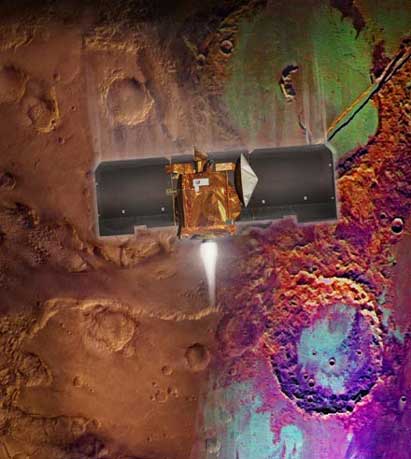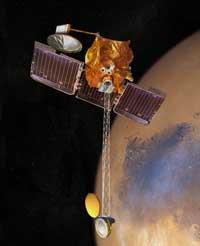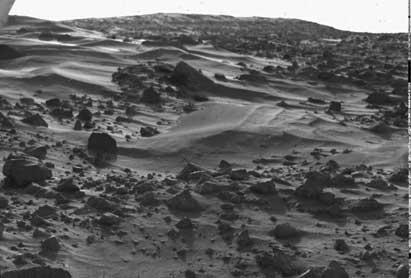Happy ending of Odyssey
2001/12/01 Elhuyar Zientzia Iturria: Elhuyar aldizkaria
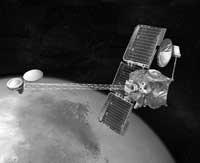
There were no surprises and, as was thought, the Mars Odyssey probe was placed on October 23 in orbit of Mars without problems. Put into orbit, the probe soon began to work and by October 28 had already begun to send the photos of the southern hemisphere of Mars. When it entered, the Mars Odyssey probe was placed in an elliptical orbit of 18 hours and 36 minutes and using the aerobraking technique, it will be placed slowly in a circular orbit of two hours to 400 kilometers high. The scientific work of the Mars Odissey probe will begin in January 2002.
With the entry into orbit, the first part of the half-year trip –odysse- of the Mars Odyssey probe is concluded. The trip began on April 7 in Cape Canaveral, Florida. Thus, the Mars Odyssey probe has traveled 644 million kilometers.
Mars Odyssey, thanks to its instruments, will be able to study the soil of Mars, find water and conduct studies of the Martian atmosphere to learn how it can affect human health. All this without descending from the orbit to Mars.
One of the objectives of the Mars Odyssey probe is to decide whether or not there was life on Mars. For there to be life, liquid water is essential. The probe to be placed in the orbit of Mars is equipped to locate the water that may be in the subsoil of Mars. Among the tasks of the Mars Odissey probe, the study of the climate also has its importance.
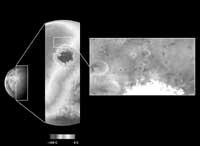
As is known, today Mars is too cold to have water on the surface. However, researchers believe that in the subsoil of Mars there can be water, so the ice that can be on Mars will be analyzed according to the seasons of the year. Mars Odissey will also conduct geological studies by researching chemical and mineral elements.
Finally, collecting the characteristics of the atmosphere, another objective of the probe is to investigate in the coming years to bring man to the red planet. In addition, Mars Odyssey will bridge the gap with probe communication systems that want to be sent to the ground of Mars in the years 2003-2004.

Gai honi buruzko eduki gehiago
Elhuyarrek garatutako teknologia



